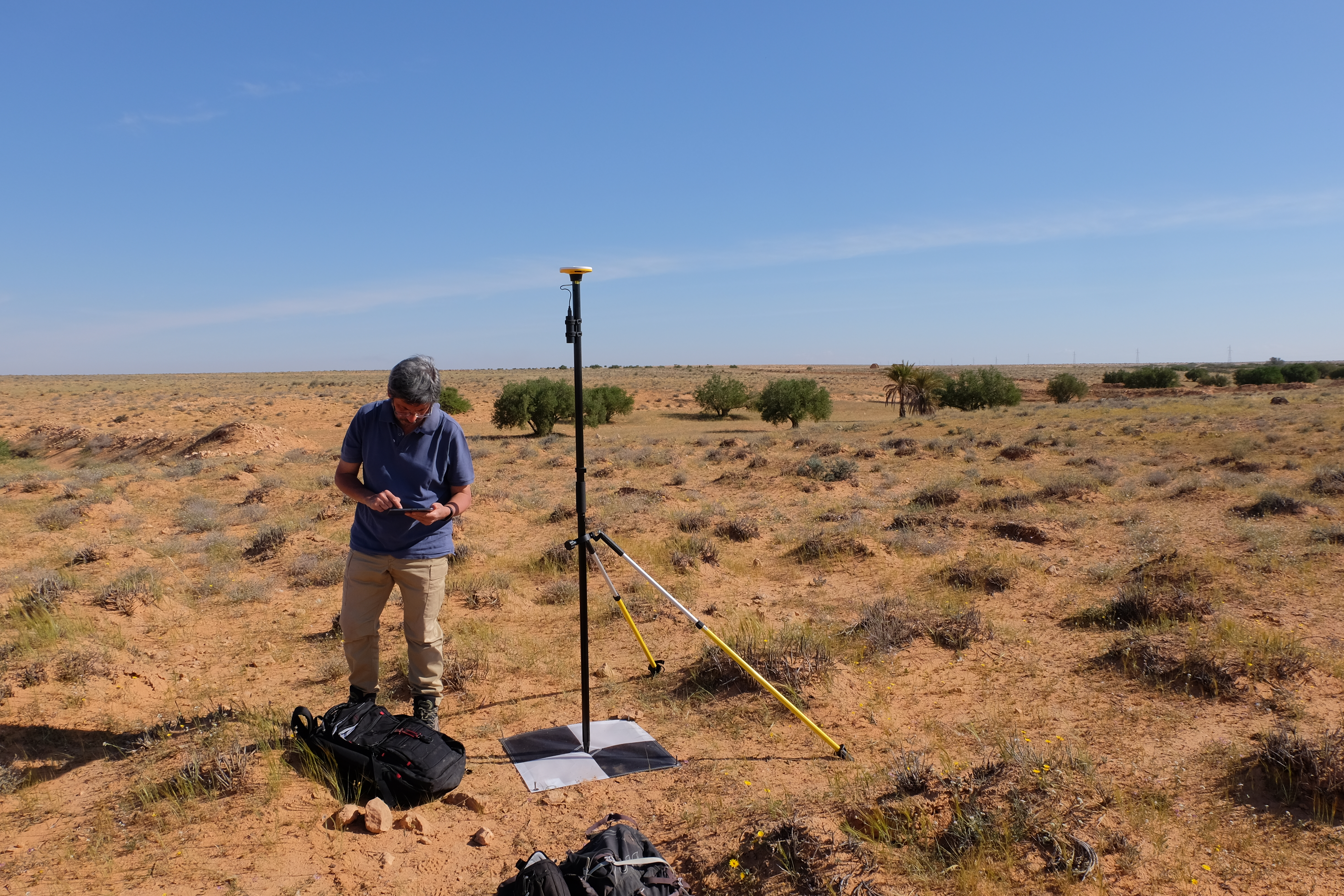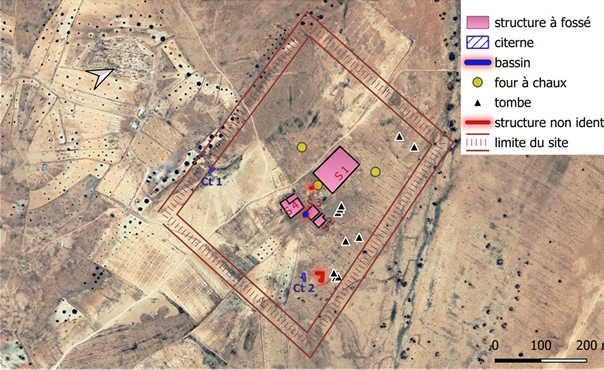Hinchir el Fesagui archaeological site on the plain of Oued el Ghordhab, Tataouine

Located 26 km north of Tataouine city, on the left bank of Oued Fessi, this site is nestled northwest of Djebal el Mzar. It extends across a vast archaeological plain, bordered by the left bank of Oued el Ghordhab, partially occupied by a tranquil olive grove. First mentioned in 1904 by Lieutenant Moreau, the site covers more than 20 hectares of land. Hincir el Fesagui is of exceptional importance, housing a considerable number of ancient constructions, primarily fortified structures and hydraulic systems. This area stands as a silent witness to a rich and complex history that dates back centuries.
Ditch and earthen structures: These structures are characterised by a square or rectangular design, surrounded by a peripheral ditch and an earthen embankment. In our case, the structures cover an area of 20,000 m² with four central constructions.

Hydraulic Structures: The site contains a set of three monumental cisterns:
1. Cistern 1:
- Orientation: North-South
- Dimensions: L = 8.10 m; W = 3.20 m; Visible H = 4 m
2. Cistern 2:
- Orientation: North-South, connected to the first by a doorway
- Dimensions: L = 8.40 m; W = 3.20 m; Visible H = 4 m
3. Cistern 3:
- Orientation: Perpendicular to the first two cisterns
- Dimensions: L = 16 m; W = 4 m

Other Discoveries:
- Two brown sandstone troughs, one measuring L = 60 cm; W = 50 cm; H = 34 cm
- African sigillata and common ceramics
- A fragment of ancient glass and a coin

Conservation and Current State: The site has suffered significant degradation due to illegal excavations and lack of maintenance. In 1983, a bottle-shaped reservoir was restored; however, modern cement was used, which altered the authenticity of the ancient coating.
Although damaged, this archaeological site remains a fascinating testament to ancient hydraulic systems and fortified rural developments. Greater recognition and protection are necessary to preserve these unique remains.


